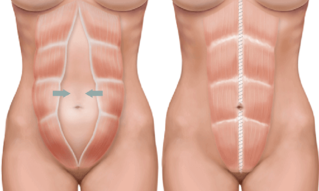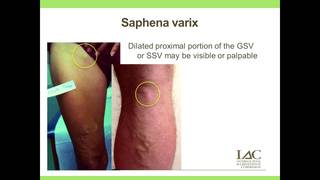Edited, memorised or added to reading queue
on 19-Aug-2021 (Thu)
Do you want BuboFlash to help you learning these things? Click here to log in or create user.
| status | not read | reprioritisations | ||
|---|---|---|---|---|
| last reprioritisation on | suggested re-reading day | |||
| started reading on | finished reading on |
| status | not read | reprioritisations | ||
|---|---|---|---|---|
| last reprioritisation on | suggested re-reading day | |||
| started reading on | finished reading on |
| status | not read | reprioritisations | ||
|---|---|---|---|---|
| last reprioritisation on | suggested re-reading day | |||
| started reading on | finished reading on |
| status | not read | reprioritisations | ||
|---|---|---|---|---|
| last reprioritisation on | suggested re-reading day | |||
| started reading on | finished reading on |
Flashcard 6689101057292
| status | not learned | measured difficulty | 37% [default] | last interval [days] | |||
|---|---|---|---|---|---|---|---|
| repetition number in this series | 0 | memorised on | scheduled repetition | ||||
| scheduled repetition interval | last repetition or drill |
| status | not read | reprioritisations | ||
|---|---|---|---|---|
| last reprioritisation on | suggested re-reading day | |||
| started reading on | finished reading on |
| status | not read | reprioritisations | ||
|---|---|---|---|---|
| last reprioritisation on | suggested re-reading day | |||
| started reading on | finished reading on |
Flashcard 6689113115916
| status | not learned | measured difficulty | 37% [default] | last interval [days] | |||
|---|---|---|---|---|---|---|---|
| repetition number in this series | 0 | memorised on | scheduled repetition | ||||
| scheduled repetition interval | last repetition or drill |
Flashcard 6689116785932
| status | not learned | measured difficulty | 37% [default] | last interval [days] | |||
|---|---|---|---|---|---|---|---|
| repetition number in this series | 0 | memorised on | scheduled repetition | ||||
| scheduled repetition interval | last repetition or drill |
Flashcard 6689121504524
| status | not learned | measured difficulty | 37% [default] | last interval [days] | |||
|---|---|---|---|---|---|---|---|
| repetition number in this series | 0 | memorised on | scheduled repetition | ||||
| scheduled repetition interval | last repetition or drill |
Flashcard 6689128320268
| status | not learned | measured difficulty | 37% [default] | last interval [days] | |||
|---|---|---|---|---|---|---|---|
| repetition number in this series | 0 | memorised on | scheduled repetition | ||||
| scheduled repetition interval | last repetition or drill |
| status | not read | reprioritisations | ||
|---|---|---|---|---|
| last reprioritisation on | suggested re-reading day | |||
| started reading on | finished reading on |
UpToDate
ial branches of the carotid arteries is very common and, due to its easy access, biopsy of the superficial temporal artery is frequently performed to obtain histopathologic confirmation of GCA. <span>Histopathology and immunopathology studies reveal inflammation of the artery wall with predominance of CD4+ T lymphocytes and macrophages, which frequently undergo granulomatous organization with formation of giant cells [2]. There is a remarkable loss of vascular smooth muscle cells (VSMC) and elastic fibers that may eventually facilitate aneurysm formation. Inflammation-induced vascular remodeling leads to intimal hyperplasia and lumen occlusion, the source of the ischemic complications of the disease [1,2]. The pathogenesis of GCA is incompletely understood. The current pathogenic model has been largely built on immunopathology and molecular studies performed with temporal artery biopsies.
| status | not read | reprioritisations | ||
|---|---|---|---|---|
| last reprioritisation on | suggested re-reading day | |||
| started reading on | finished reading on |
UpToDate
.) PREDISPOSING FACTORS — Epidemiologic studies demonstrate predominance in older adults, females, and individuals of Northern European ancestry. Occasional family clustering has been reported. <span>These data strongly suggest that senescence, sex, and genetic background all contribute to the pathogenesis of giant cell arteritis (GCA) [1]. The role of aging and sex remains elusive. Along with candidate gene studies performed over the years, an international large-scale genotyping effort has confirmed a strong association between GCA and genetic variants in the maj
| status | not read | reprioritisations | ||
|---|---|---|---|---|
| last reprioritisation on | suggested re-reading day | |||
| started reading on | finished reading on |
UpToDate
ported. These data strongly suggest that senescence, sex, and genetic background all contribute to the pathogenesis of giant cell arteritis (GCA) [1]. The role of aging and sex remains elusive. <span>Along with candidate gene studies performed over the years, an international large-scale genotyping effort has confirmed a strong association between GCA and genetic variants in the major histocompatability complex (MHC) region, particularly human leukocyte antigen (HLA)-DRB1*04:04, HLA-DQA1*03:01, and HLA-DQB1*03:02. The derived risk amino acids are located in the antigen-binding pocket of the HLA molecule. These findings support the role of adaptive immunity and the concept that GCA may be an antigen-driven disease [6-8]. A genome-wide association study indicates that, in addition to MHC polymorphisms, variants in genes related to angiogenesis and vascular biology also predispose to GCA [7]. Additional v
| status | not read | reprioritisations | ||
|---|---|---|---|---|
| last reprioritisation on | suggested re-reading day | |||
| started reading on | finished reading on |
UpToDate
genes involved in T helper (Th) 1, Th17, and regulatory T-cell function associated with increased GCA risk have also been identified at a subgenome-wide significance level [6]. INITIAL EVENTS — <span>The nature of the triggering agent(s) has not been identified with certainty. Periodic increases in incidence observed in some epidemiologic studies suggest a role for environmental factors [9]. Various microbe and viral sequences have been detected in temporal artery lesions, but no convincing causal relationship has been demonstrated [10-14]. Dendritic cell and T lymphocyte activation — Dendritic cells, present in the adventitia of normal arteries, can be activated in giant cell arteritis (GCA) through pathogen- or damage-se
| status | not read | reprioritisations | ||
|---|---|---|---|---|
| last reprioritisation on | suggested re-reading day | |||
| started reading on | finished reading on |
UpToDate
the most common idiopathic systemic vasculitis [1]. In the United States, the lifetime risk of developing GCA has been estimated at approximately 1 percent in women and 0.5 percent in men [2]. <span>The greatest risk factor for developing GCA is aging. The disease almost never occurs before age 50 years, and its incidence rises steadily thereafter, peaking between the ages of 70 to 79 [3], with over 80 percent of patients older than 70 years of age [4,5]. One study found the mean age at incidence of GCA to be 76.7 years [6]. In addition to age, ethnicity is a major risk factor for GCA. The highest incidence figures are found in Scandinavian countries and among Americans of Scandinavian descent. The annual i
| status | not read | reprioritisations | ||
|---|---|---|---|---|
| last reprioritisation on | suggested re-reading day | |||
| started reading on | finished reading on |
UpToDate
y thereafter, peaking between the ages of 70 to 79 [3], with over 80 percent of patients older than 70 years of age [4,5]. One study found the mean age at incidence of GCA to be 76.7 years [6]. <span>In addition to age, ethnicity is a major risk factor for GCA. The highest incidence figures are found in Scandinavian countries and among Americans of Scandinavian descent. The annual incidence of GCA in Olmsted County, Minnesota is 17 per 100,000 persons over the age of 50, similar to that in Scandinavian countries [3]. This similarity probably reflects s
| status | not read | reprioritisations | ||
|---|---|---|---|---|
| last reprioritisation on | suggested re-reading day | |||
| started reading on | finished reading on |
UpToDate
lly diagnosed cases. A study from Sweden found arteritis in 1.6 percent of 889 postmortem cases in which sections of the temporal artery and two transverse sections of the aorta were made [10]. <span>As with many systemic rheumatic diseases, females are affected more frequently than males, in a ratio of almost 3:1 in populations of Scandinavian descent [3]. The ratio of women to men is lower in Mediterranean countries. Familial aggregation of GCA is not unusual [11]. (See "Pathogenesis of giant cell arteritis", section on 'Predisposing factors'.) Most studies have found that life expectancy is not, or is only marginally, reduced in GCA [12-14], with
| status | not read | reprioritisations | ||
|---|---|---|---|---|
| last reprioritisation on | suggested re-reading day | |||
| started reading on | finished reading on |
UpToDate
with the exception of the subset of patients who develop aortic aneurysm or aortic dissection or rupture [15]. (See 'Large vessel involvement' below.) ASSOCIATION WITH POLYMYALGIA RHEUMATICA — <span>Polymyalgia rheumatica (PMR) is characterized by aching and morning stiffness about the shoulder and hip girdles, in the neck, and in the torso. PMR is closely linked to giant cell arteritis (GCA), occurring in approximately 40 to 50 percent of patients with GCA [16]. Conversely, GCA is found in approximately 10 percent of patients with PMR. (See "Clinical manifestations and diagnosis of polymyalgia rheumatica".) The precise nature of the relationship between GCA and PMR is not completely understood. In some patients, sympt
| status | not read | reprioritisations | ||
|---|---|---|---|---|
| last reprioritisation on | suggested re-reading day | |||
| started reading on | finished reading on |
UpToDate
y 40 to 50 percent of patients with GCA [16]. Conversely, GCA is found in approximately 10 percent of patients with PMR. (See "Clinical manifestations and diagnosis of polymyalgia rheumatica".) <span>The precise nature of the relationship between GCA and PMR is not completely understood. In some patients, symptoms and signs of the two conditions occur simultaneously, while in others they appear separately over time. CLINICAL FEATURES — The onset of symptoms in giant cell arteritis (GCA) tends to be subacute, but abrupt presentations over a few days can occur. Although many of the clinical manifesta
| status | not read | reprioritisations | ||
|---|---|---|---|---|
| last reprioritisation on | suggested re-reading day | |||
| started reading on | finished reading on |
An interesting case of temporal arteritis that manifested as ptosis and diplopia
however, it has a sensitivity of only 15–40% [4]. About 25% of biopsies do not show granulomas [3] as demonstrated in our patient above. Open in a separate window Figure 5 ACR criteria for GCA. <span>The pathogenesis of GCA remains poorly understood. One of the mechanisms appears to be the innate pathway in which there is recognition of host cells as foreign by dendritic cells, with activation of the inflammatory cascade, the key mediators being CD4+, IFN-y and IL-6 [1]. The other important mechanism is the antigen-driven response, by which vessels are affected—the arterial walls are compromised, resulting in focal ischemic changes [1]. As noted above,
| status | not read | reprioritisations | ||
|---|---|---|---|---|
| last reprioritisation on | suggested re-reading day | |||
| started reading on | finished reading on |
An interesting case of temporal arteritis that manifested as ptosis and diplopia
D4+, IFN-y and IL-6 [1]. The other important mechanism is the antigen-driven response, by which vessels are affected—the arterial walls are compromised, resulting in focal ischemic changes [1]. <span>As noted above, visual disturbances are important diagnostic symptoms, including visual loss, either partial or complete; amaurosis fugax; double vision and ocular pain. Of these, diplopia occurs rarely and is present in ~5–10% of GCA patients [5], though this is likely underreported due to its transient and retrospective nature, as it was for our patient. Diplopia is associated with higher incidence of permanent visual loss [6]. Ptosis in GCA remains even more rare. Though there have been some reports in the literature of Horner’s syndrome in GCA [2, 7], pupil-sparing isolated third nerve palsies were only note


